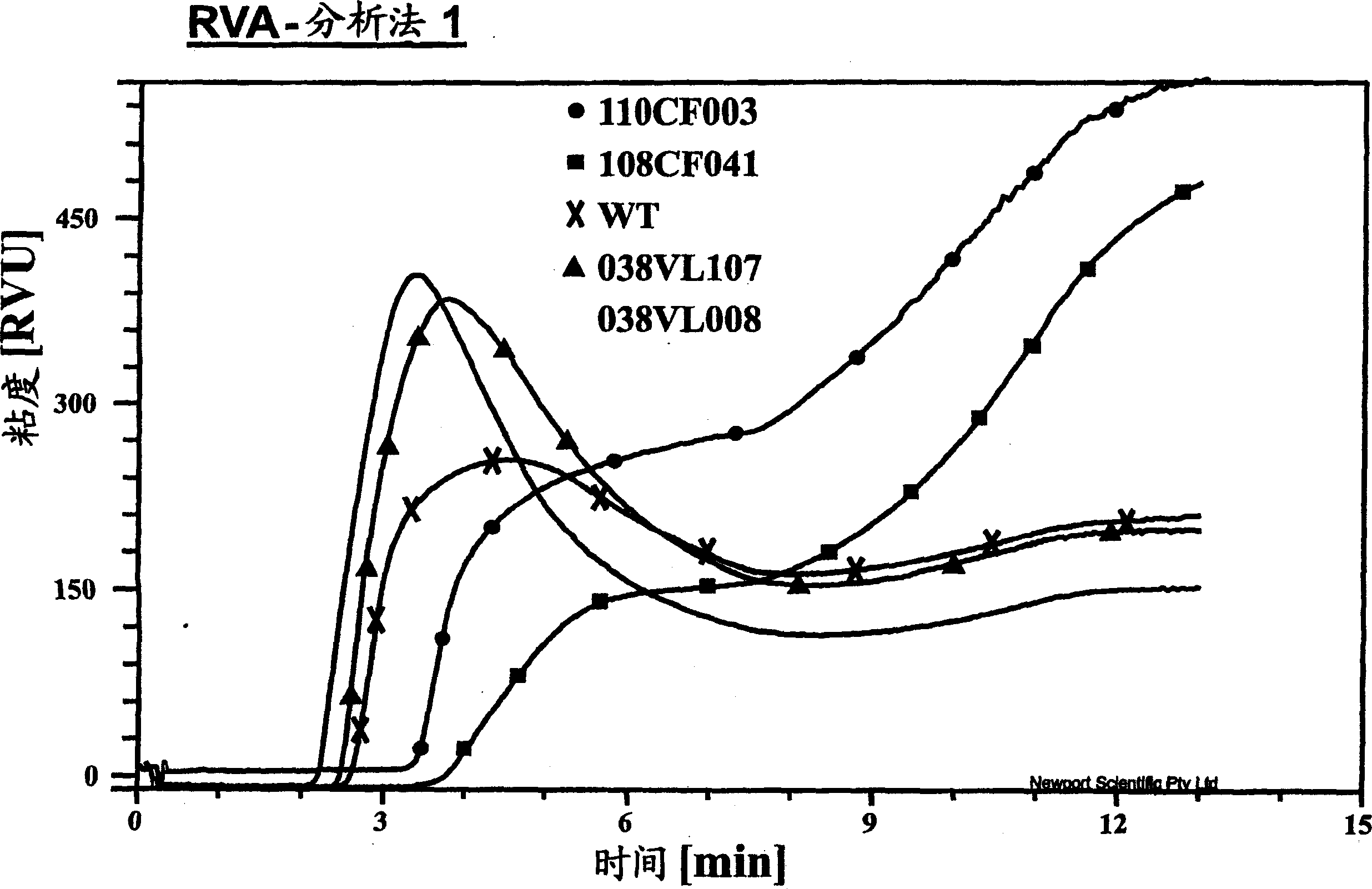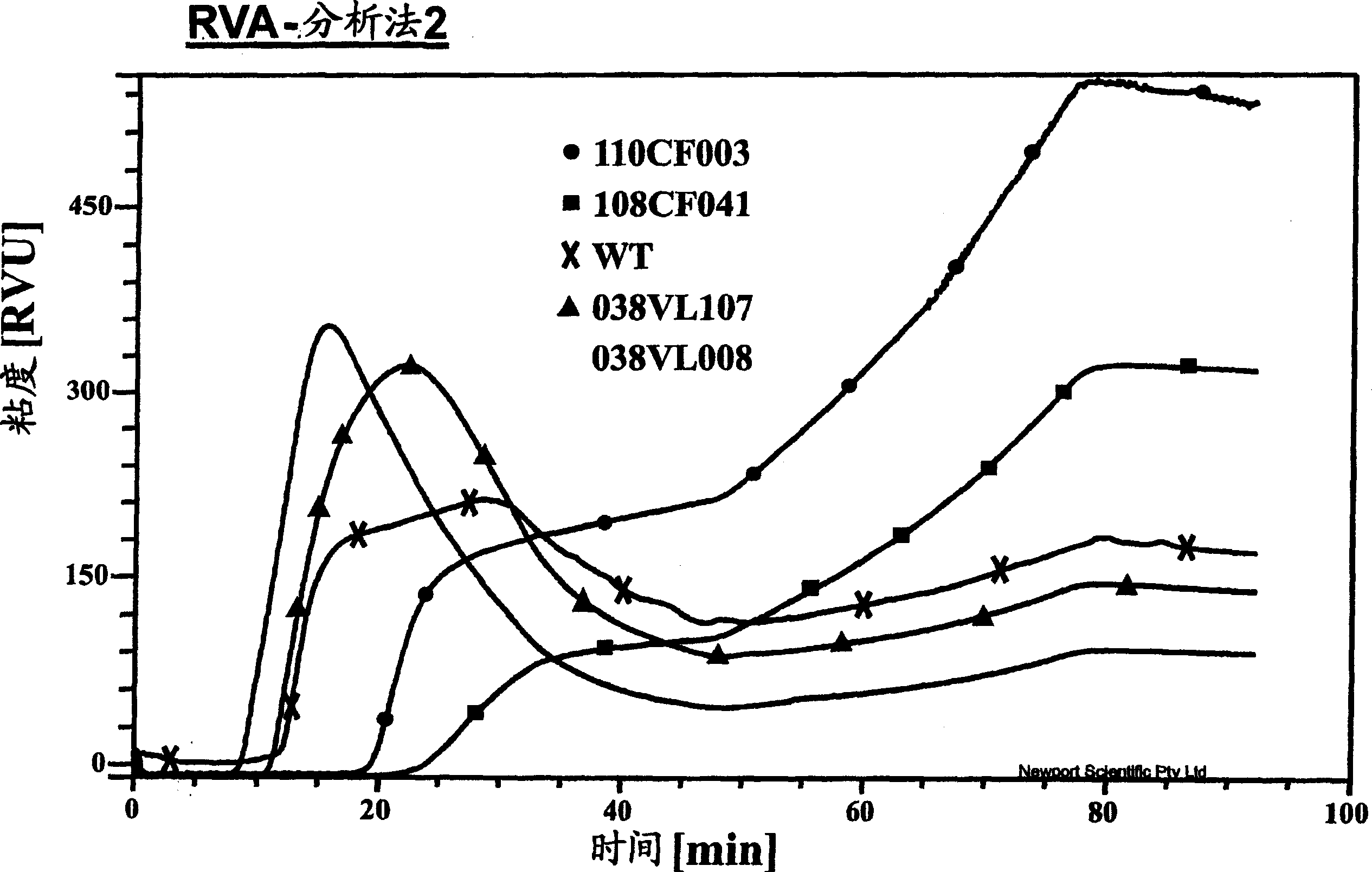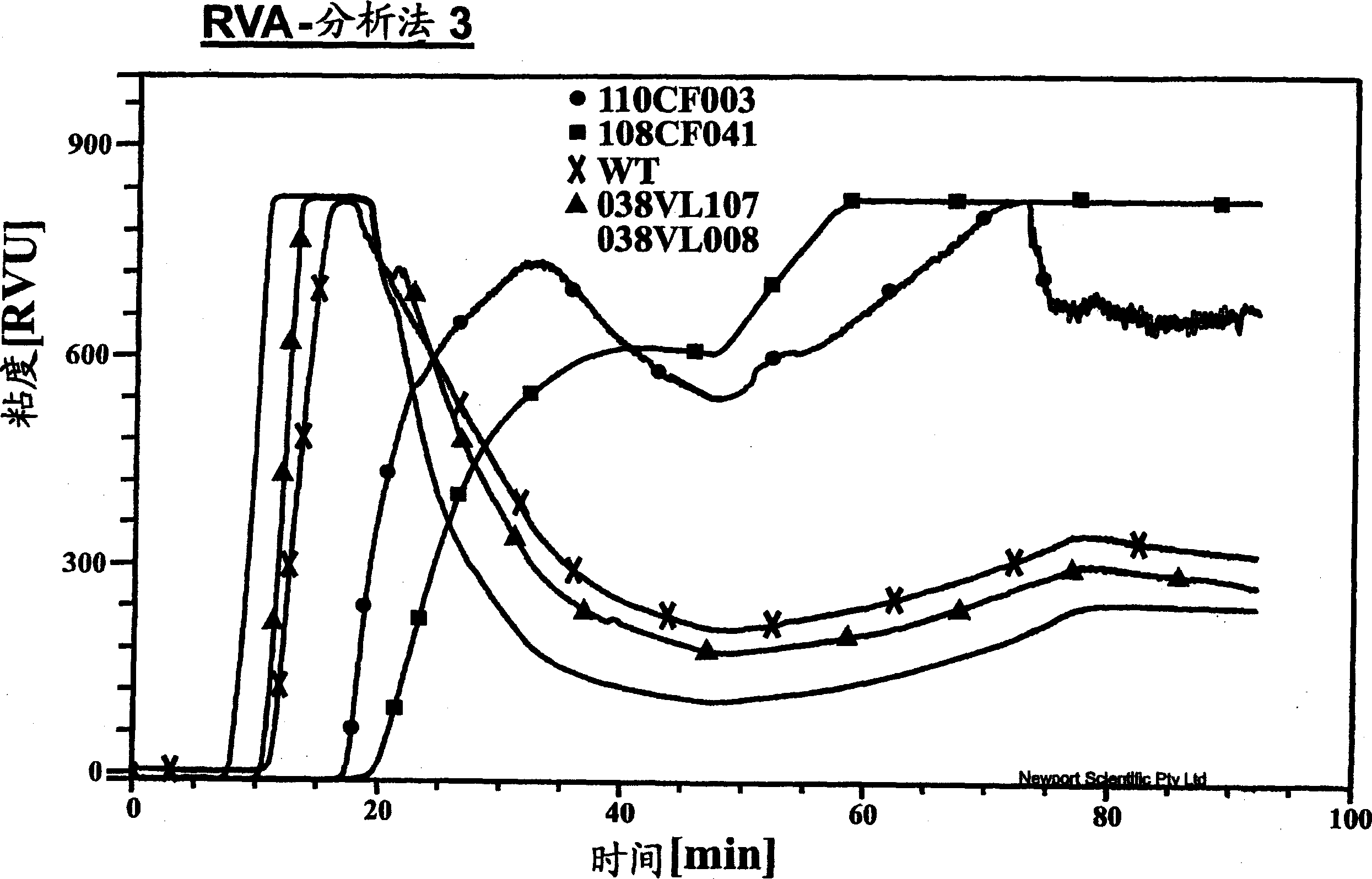Plant cells and plants which synthesize a starch with an increased final viscosity
A plant cell and plant technology, applied in the field of plant cells and plants, can solve the problems of high final viscosity and unobtained
- Summary
- Abstract
- Description
- Claims
- Application Information
AI Technical Summary
Problems solved by technology
Method used
Image
Examples
Embodiment 2
[0288] Analysis of starch from plants with reduced expression of BEI, SSIII and BEII genes
[0289] Starch from different independent lines of transformants 108CF and 110CF described in Example 1 was isolated from potato tubers. The physicochemical properties of this starch were then analyzed. Characterization results of the modified starches are shown in Table 2 (Tab. 2) as examples for some selected plant lines. Analysis was performed by the method described above.
[0290] Tables 2, 3 and 4 below summarize the results of the RVA analysis based on starch from wild-type plants:
[0291] RVA
[0292] Table 2: from wild-type plants (cv.Desiree), plants with reduced SSIII and BEI protein activity (038VL008, 038VL107), and plants with reduced SSIII, BEI and BEII protein activity (108CF041, 110CF003) RVA analysis parameters for starch expressed as a percentage based on wild-type starch data. RVA analysis was performed as described in Assay 1.
[0293] R...
Embodiment 3
[0320] Analysis of Side Chain Distribution of Amylopectin by Gel Permeation Chromatography
[0321] For the separation of amylose and amylopectin, 100 mg of starch were dissolved in 6 ml of 90% strength (v / v) DMSO under constant stirring. After adding 3 volumes of ethanol, the precipitate was separated by centrifugation at 1800 g for 10 minutes at room temperature. The precipitate was then washed with 30 ml of ethanol, dried and dissolved in 10 ml of 1% strength (w / v) NaCl solution at 60°C. After the solution was cooled to 30°C, about 50 mg of thymol was slowly added, and the solution was incubated at 30°C for 2-3 days. The solution was then centrifuged at 2000g for 30 minutes at room temperature. The supernatant was treated with 3 volumes of ethanol, and the precipitated amylopectin was separated by centrifugation at 2000 g for 5 minutes at room temperature. The pellet (pullulan) was washed with 10 ml of 70% strength (v / v) ethanol, centrifuged at 2000 g for 10 minutes at r...
PUM
 Login to View More
Login to View More Abstract
Description
Claims
Application Information
 Login to View More
Login to View More - R&D
- Intellectual Property
- Life Sciences
- Materials
- Tech Scout
- Unparalleled Data Quality
- Higher Quality Content
- 60% Fewer Hallucinations
Browse by: Latest US Patents, China's latest patents, Technical Efficacy Thesaurus, Application Domain, Technology Topic, Popular Technical Reports.
© 2025 PatSnap. All rights reserved.Legal|Privacy policy|Modern Slavery Act Transparency Statement|Sitemap|About US| Contact US: help@patsnap.com



